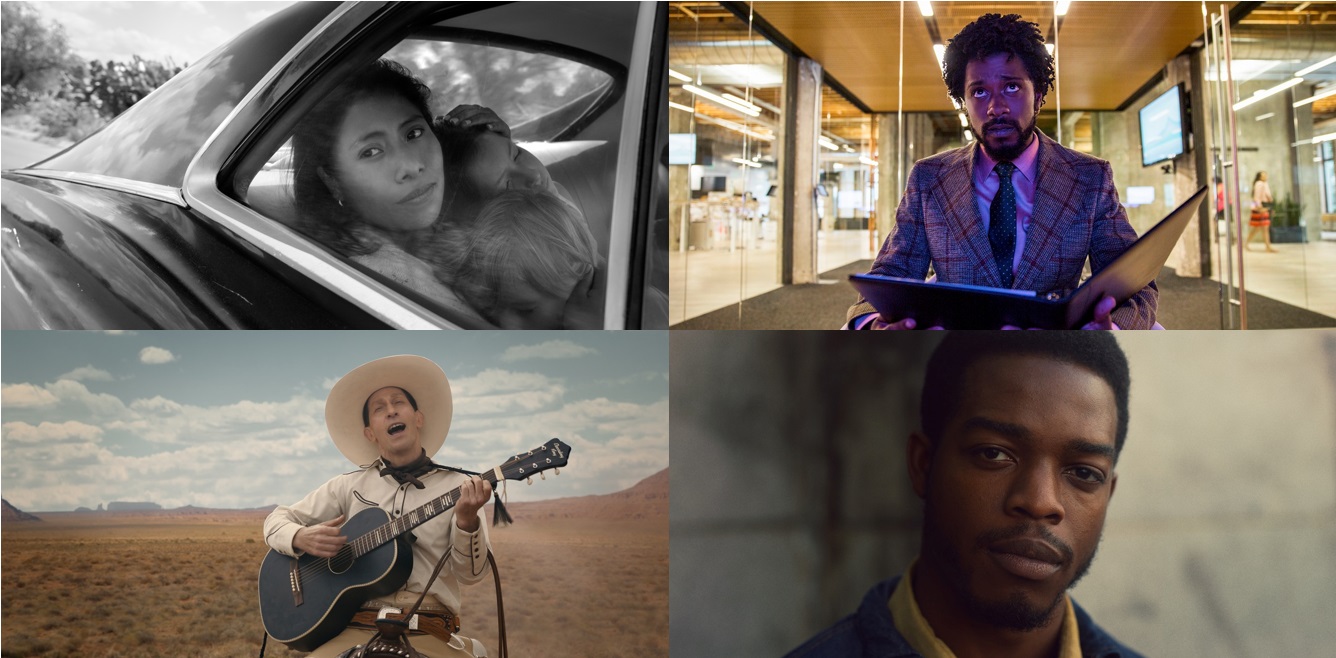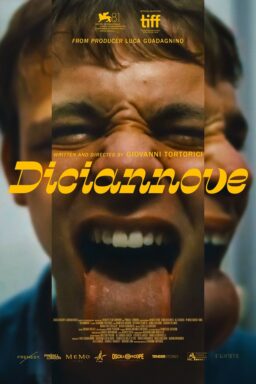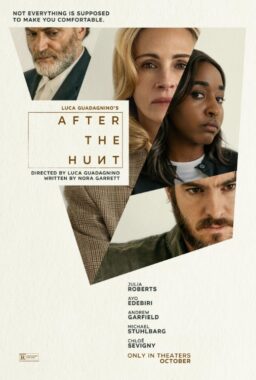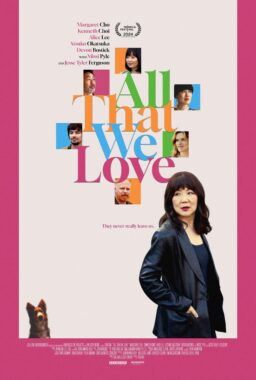As one of our greatest poets once sang, the times they are a-changin’. While certain film institutions seem intent on defying the incurrence of streaming cinema, Netflix had their best year to date, releasing three of what we consider the greatest movies of 2018, and landing the top two spots. How this will impact moviemaking going forward isn’t clear yet, but it almost certainly will. Once again, our list is a wonderful blend of new voices like those of Boots Riley and Sandi Tan, alongside that of established veterans like Spike Lee and Alfonso Cuarón. We chose films from around the world this year, including entries from Korea, Poland, Mexico, and an anthology about the Old West. From documentary to comedy, drama to Western, Paul Schrader to James Baldwin—this may be our most diverse list to date, indicating the breadth of great art we saw in 2018.
About the rankings: We asked our regular film critics and assistant editors to submit top ten lists from this great year, and then consolidated them with a traditional points system—10 points for #1, 9 points for #2, etc.—resulting in the list below, with a new entry for each awarded film. We’ll publish each critic’s individual list as the week goes on. Come back for more.

10. “Cold War”
Inside the Iron Curtain of the 1950s, a rising composer named Wiktor (Tomasz Kot) and his producer, Irena (Agata Kulesza), scour the Polish countrysides and mountaintops for folk songs to bring back to Soviet bloc cities. While auditioning peasant singers to perform these folk numbers on tour, Wiktor’s eyes meet those of a confident and mysterious blond, Zula (Joanna Kulig). He’s quickly taken with her bold presence, and she soon follows his lead into a tempestuous relationship that will stretch years, borders and other partners.
There may only be a handful of times in life you lock eyes with someone like Wiktor and Zula do in Pawel Pawlikowski’s “Cold War.” You remember where you two met in that moment, what that person wore, who else was there and how you hung on their every word as you tried to hide how intensely you both looked at each other. Some details of the day fade, others grow sharper as you replay the scene over and over—even if that person is no longer in your life.
Beyond its lovestruck appeal, the gorgeous black-and-white cinematography of “Cold War” enchants viewers with dazzling compositions, bringing intimate moments to an epic scale. Almost every note of the movie’s eclectic soundtrack—which ranges from forlorn Polish folk tunes to sultry French jazz—aches as much as the lovers’ wistful stares. They are echoes of the way Humphrey Bogart looked at Ingrid Bergman in “Casablanca,” how Omar Sharif looked at Julie Christie in “Doctor Zhivago” and the glances Maggie Cheung gave Tony Leung during “In the Mood for Love.”
Under the lens of an unromantic reality, it’s possible to view these two lovers as mere hopeless mismatches. But in Pawlikowski’s film, there is a tragic beauty in Wiktor and Zula’s doomed-to-fail love. “Cold War” sympathizes with those who know it is a blessing and a curse to have feelings outlive an affair. (Monica Castillo)

9. “Burning”
Cats. Wells. Borders. Victims. Killers. There is a lot that’s indistinct and even invisible in the discomforting thriller “Burning” from South Korean director Lee Chang-dong. Loosely based on Barn Burning, a short story by Haruki Murakami, “Burning” rises from the ashes of unspoken battles and deeply held grudges between friends, genders and those that dwell on the opposite sides of the socio-economic tracks so casually that you wonder for a while where this devious suspense, co-written by Lee and Jungmi Oh, might take you. Trust me when I say, it will neither escort you somewhere commonplace nor answer your burning questions like an ordinary movie would—this elegantly calibrated chiller led by a pitch-perfect ensemble is more about the search amid blurring boundaries than reaching an orderly conclusion.
It all begins by a chance encounter that unfolds as uneventfully as any pivotal occurrence that would follow it. Working as a promo rep handing out raffle tickets, the young, bouncy Hae-mi (Jong-seo Jeon) spots and greets the aspiring writer Jong-su (Ah-In Yoo), a guy she knew from childhood. He doesn’t remember her, so she randomly mentions she’s had plastic surgery for beauty. Boyish to an extreme, awkward and clearly taken by Hae-mi, Jong-su follows her into her tiny rental room where the two have sex after Hae-mi (again, abruptly) reminds him he once called her ugly. Taking care of his burdened father’s farm close to the North Korea border, Jong-su finds his bliss cut short when Hae-mi leaves for an overseas trip, asks him to feed her cat Boil in her absence and comes back with the handsome, wealthy and enigmatic Ben (Steven Yeun) who seems to be everything Jong-su is not. Ben lives in an expensive apartment, drives a Porsche and (to Jong-su’s intense distaste) listens to music while cooking pasta.
A virtuoso of slow-burns (“Secret Sunshine” and “Poetry” among them), Lee Chang-dong patiently folds in mysteries as well as themes around gender and social class into “Burning,” while occasionally playing up a comedic tone that strengthens the unclassifiable nature of the film. Is the arsonist womanizer Ben a version of Patrick Bateman driven to insanity by capitalism? Does Hae-mi really have a cat or is she settling scores with the boy who was once cruel to her? Does Jong-su suffer from an overambitious writer’s imagination or is Ben’s uncanny smile really as condescending as it looks? When Jong-su acts upon his justified instincts on a bitterly cold, snow-covered day, you will inhale the frosty air with shivers down your spine, feeling only certain that “Burning” is one of those all-timers that begs to be re-watched repeatedly; a true one-of-a-kind with a lot on its mind. And Steven Yeun? His dismissive yawning is the stuff of (alleged) villains for the ages. (Tomris Laffly)

8. “BlacKkKlansman”
Every scene in “BlacKkKlansman” is practically watermarked with “A Spike Lee Joint” in the bottom right corner. This true story is the perfect vehicle for Lee’s penchant for hilariously pitch black humor and it also allows him to settle an old score. Taking Godard’s advice about using a new movie to criticize another movie, Lee aims squarely at D.W. Griffith’s “Birth of a Nation,” ridiculing it relentlessly wherever appropriate. Not only does the film appear as a snarky punchline during a Klan rally, Lee also uses Griffith’s own devices against him by structuring Ron Stallworth’s last reel race against time as a thrilling, Klan-centric montage that serves as a corrective to Griffith’s racist imagery. This sequence deviates from the real-life story Lee is telling, so it was deemed controversial. Surely Lee relished the thought of this perception. Because when Griffith dabbled in propaganda, it was “history written with lightning.” When Lee mocked that dabbling, it was heresy written with politics. And it was just as effective!
John David Washington and Adam Driver give stellar performances, though the latter is surprisingly the film’s biggest proponent of identity introspection. While Washington hides his identity behind a telephone and a voice, Driver hides his in plain sight, thereby incurring more collateral damage. And though the plot comments on racism and anti-Semitism, Lee builds a reality-based trap door into his cinematic contraption, one that opens as soon as he invokes his trademark people mover shot. Suddenly, we’re thrust into the terrifying, present day fate that befell Heather Heyer, whose appearance at the Charlottesville protest ended with her death. This real-life footage is a provocation, but it’s one bursting with truth about the state of racism in America and is therefore not exploitative. Lee dedicated “BlacKkKlansman” to Heyer, and the film’s rise in the award season coincides with the recent guilty verdict delivered to the man who killed her. This is one of Lee’s most urgent and timely films. It’s also one of his best. (Odie Henderson)
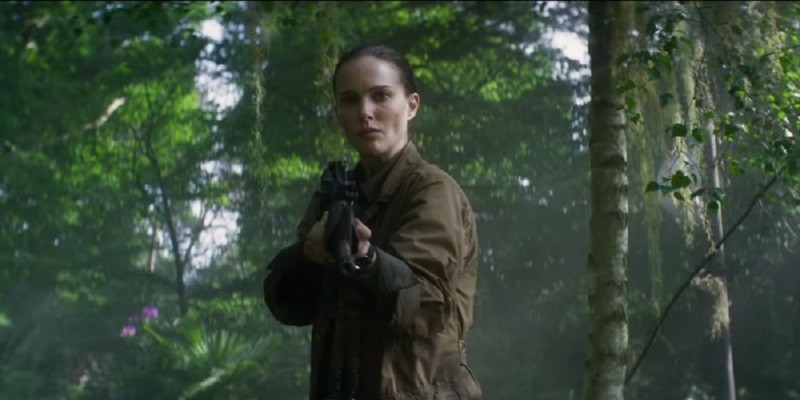
7. “Annihilation”
In 2018, Stanley Kubrick’s landmark science fiction film “2001: A Space Odyssey” turned 50. That same year, writer-director Alex Garland released “Annihilation,” a rare film that lives up to the totality of what made “2001” so revered and valuable, rather than merely imitating certain aspects of its design, structure, or tone. It’s one of the great science fiction films of recent years, easily the equal of “Ex Machina,” “Arrival,” “Under the Skin” and “Blade Runner 2049,” and superior to all of them (except “Under the Skin”) in one respect: it encourages multiple interpretations and deeply personal responses, while waving off any attempt to simplistically “explain” what the audience has seen. Adapted from the first of Jeff VanderMeer’s Southern Reach novels, the movie is structured as a series of discrete set pieces, complete with Kubrickian chapter titles (a la “The Shining” as well as “2001”). If you watch it more than once—as you should; it deepens with every viewing—you start to see it as a set of thought prompts rather than a traditional narrative, though one that’s anchored to strong, simple characterizations and full performances.
The heroine is Army soldier turned biologist Lena (Natalie Portman), whose husband Kane (Oscar Isaac) went missing for a year during a top secret mission, then briefly, miraculously returned to her shortly before puking up blood and being rushed to the intensive care unit at a top secret research facility in a swamp near the Florida coastline. The area was impacted by a meteor that created a “Shimmer”—a demarcated zone where the rules of evolution seem to have gone haywire, integrating the DNA of plants, mammals and reptiles that were thought incompatible, and killing off all the members of expeditions sent to explore the place (Kane is the only survivor, though we immediately sense that the person returned from the Shimmer isn’t actually Kane). Lena joins up with four other women—Ventress (Jennifer Jason Leigh), Thorensen (Gina Rodriguez), Radek (Tessa Thompson), and Sheppard (Tuva Novotny)—to journey into the Shimmer and attempt to understand it.
But there are limits to understanding, and the key to the excellence of Garland’s film is its determination to pose questions without supplying answers. I hosted a screening of the film back in March—my third viewing—and discussed it with the audience afterward, and together we came up with at least nine different answers to the question, “What is this movie about?”
It’s possible to piece together what happened, event-wise, to everyone in the expedition, and how one event might’ve led to another, culminating in the finale, an audacious two-character confrontation that feels like a cross between a modern dance performance and a spectral assault. But once you’ve done that, you’re still left with the question of what it all meant, and you’re on your own. Which is as it should be, because in life, you’re on your own, too. (Matt Zoller Seitz)

6. “Shirkers”
One indication of why this is a near-great film: although it is a relatively straightforward and coherent narrative account—albeit one so surprising as to be, weirdly, equally exhilarating as it is upsetting—almost everyone who watches it has a different idea of its theme. Is it about toxic males holding women down? The challenges facing a female artist? The difficulty of making art in Singapore?
Sandi Tan’s documentary memoir/detective story cannily maintains a core pose of modesty while insinuatingly exploring a series of big ideas. Serving as her own narrator, Tan tells of her 1990s time as an artistically ambitious teen in Singapore, under the spell of maverick filmmakers like David Lynch and believing she had found a cinematic partner in crime with an older man from the States, a teacher and self-styled would-be auteur named Georges Cardona. Sandi forges alliances with the smaller-than-a-handful number of like-minded conspirators on her not-yet-economically-booming island to make her film. A film that Cardona absconds with, leaving behind no explanation or apology.
The rediscovery of the footage in 2010 made this movie possible. But it didn’t determine this movie’s power. Even if it took Tan several decades to realize it, “Shirkers” proves her a born moviemaker. (Glenn Kenny)

5. “If Beale Street Could Talk”
When I interviewed writer/director Barry Jenkins about “Moonlight,” we talked about the movie’s haunting score, composed by Nicholas Britell. “Many directors would use songs of the era to place the audience in the film’s three time periods,” I said. “Two things,” he replied. “First, we could not afford the rights to those songs. But more important, I believe these characters deserve a full orchestral score.”
I thought of those words as I watched Jenkins’ latest film, “If Beale Street Could Talk,” based on the 1974 novel by James Baldwin. Or, I should say, it did not feel like I was watching the film. It was more like I was immersed in it. The entire theme of the movie could be, “These characters deserve a full orchestral score” along with the highest level of every other creative and aesthetic element available to a filmmaker, from Baldwin’s lyrical words to the luscious cinematography of “Moonlight’s” James Laxton, another gorgeous score by Britell, and performances of infinite sensitivity and humanity.
“If Beale Street Could Talk” succeeds brilliantly at one of cinema’s most central functions: a love story with sizzling chemistry between two impossibly beautiful people. Stephan James (“Race”) and newcomer KiKi Layne are 2018’s most compelling romantic couple. Their relationship is in every way the heart of this story, the reason we feel so sharply about the injustice that befalls James’ Fonny, the film’s most undeniable signifier of generations of institutional racism. We see that most powerfully when Regina King, as the girl’s mother, looks in the mirror as she prepares like a matador entering the bullring for a meeting that could make all the difference for the couple. She cannot expect much, but she has to try. Throughout the movie, there is resignation and there are diminished hopes but there is also resilience. And “Beale Street” reminds us that there is also undiminished and imperishable love: romantic love, the love of parents and siblings, even an unexpected encounter with a warmhearted landlord. There is the love Baldwin and Jenkins have for these characters. And, most of all, it reminds us that this is a story that deserves to be told with the best that movies have to offer, including a full orchestral score. (Nell Minow)

4. “First Reformed”
Ethan Hawke just gets better with age, as he casts aside the boyish good looks and swaggering sense of rebellion that made him both a superstar and an indie darling in the 1990s for more mature, fascinatingly flawed characters. He’s well into his 40s now and letting the passage of time show on his face, in his demeanor and in the complicated men he’s choosing to play on screen. In Paul Schrader, Hawke is ideally matched with a filmmaker whose own work has only grown deeper and more resonant over the past several decades. “First Reformed” feels like a culmination of sorts for both the writer/director and his star. It has echoes of past efforts from both while it also wrestles with bracingly contemporary themes of personal responsibility, stewardship and activism.
Hawke stars as Reverend Ernst Toller, a country priest in upstate New York whose involvement in the lives of a married couple in his congregation steadily causes him to lose his grip. With heavy shades of the iconic character he created in Travis Bickle, Schrader vividly presents a man who’s grappling with reality and his perceived role within it. He says so much within the film’s quiet stillness and precise austerity as well as with masterful narration that offers a glaring contrast between Toller’s journals and the truth. “First Reformed” represents the best work of Hawke’s lengthy and eclectic career, and it’s a welcome return to form for the veteran Schrader. But it also allows Amanda Seyfried to show a dramatic depth we haven’t seen from her before as the woman who could be Toller’s salvation or his undoing. That sense of ambiguity only becomes more gripping as the film progresses, leading to an ending that’s boldly open for interpretation but is undeniably daring and haunting. (Christy Lemire)
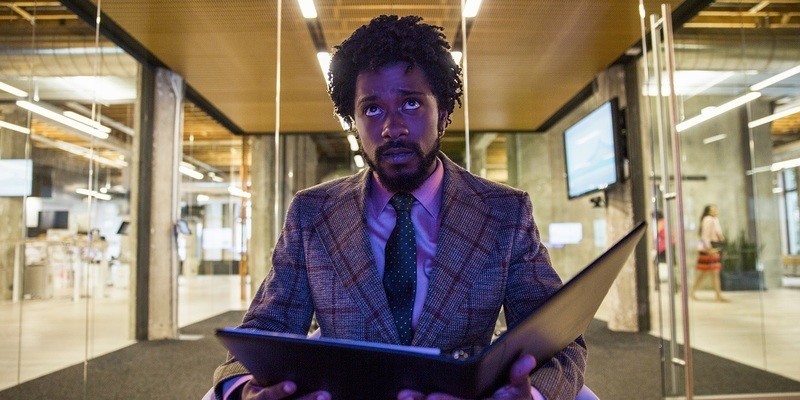
3. “Sorry to Bother You”
Like many good dark comedies (ex: “Office Space,” “Bamboozled“) the hysterically caustic “Sorry to Bother You” feels like a full-blown panic attack. The film’s class conscious anxiety (and mordant sense of optimism) is also contagious, as it is in movies like “Starship Troopers” and “Putney Swope.”
With “Sorry to Bother You,” writer/director Boots Riley takes credible, if pointedly exaggerated sources of social, racial, and economic tension and exaggerates them beyond the realm of our known experiences. At the same time: Riley’s thrillingly inventive conception of the rise-fall-rise-fall-and-rise-again character arc of call center worker drone Cassius “Cash” Green (an incredible Lakeith Stanfield) always feels real enough, even when it takes a hard turn into (what is currently) the realm of science-fiction.
In that sense: “Sorry to Bother You” is also a great American social critique (ex: “A Face in the Crowd,” “Idiocracy”) since it teaches viewers how to watch it. Riley handily realizes Francois Truffaut’s goal of introducing four ideas per minute—and they’re each fully-realized and easily understood. That’s a major talent when your film essentially weaponizes audience surrogate Cash’s relatability. We grow more and more aware of the unbearable heaviness of Cash’s existence as a young, black, and talented man. First he stops thinking of himself as a barnacle on an unfathomable ship of industry and starts to see himself as a major player. Then he stops letting himself be seduced by the trappings of his newfound financial success and starts to focus on the application of his talents. Finally, Cash stops fooling himself into thinking that he’s just a messenger of utilitarian progress and becomes a victim of his own self-deluded progress. But by then it’s too late. Or not. It’s late, but it ain’t never. (Simon Abrams)
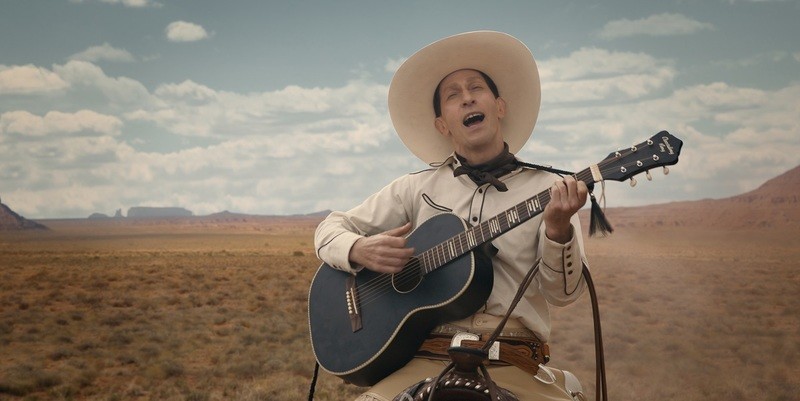
2. “The Ballad of Buster Scruggs”
Like so much of the best work of Joel & Ethan Coen, their latest film is a tough one to describe. On the surface, it’s an old-fashioned anthology piece, a reworking of what was once an iddea for a TV series into a collection of Old West vignettes, playing out like a storybook. But that sells it short. It sells short how each narrative feels like it flows into the next. It sells short the mastery of tone both within each individual story and tying together the overall piece. It sells short the way the Coens intertwine their vision of the Old West with a dissection on the very practice of storytelling and their roles as beloved storytellers themselves. And it sells short the incredible individual pleasures within each of the six short films, all of them bursting with gorgeous cinematography, memorable performances, and fascinating subtext. It’s the best western in years because it’s both completely knowledgeable about the tropes of the genre and able to subvert them at the same time.
Take the opening short, the one that gives the film its name. A singing cowboy plods through the desert, warbling a tune to the rhythm of his horse’s footsteps. He speaks directly to the camera, showing us that he’s been labeled a misanthrope—a title that has been incorrectly applied to the Coens’ dark sense of humor on more than one occasion. This leads one to presume that what follows is designed to defy or subvert that label. But that’s not really what happens. “The Ballad of Buster Scruggs” is constantly going left when you expect it to go right—and then making you feel dumb for thinking it would ever go right.
It’s also a fascinating dissection of death—from enemies, former friends, and even by one’s own hand. Death comes for everyone. It’s a theme woven through all six vignettes, and it’s telling that the final piece is about a pair of men who distract their targets with stories. If filmmakers have ever put themselves on screen more bluntly, I can’t think of when. While the story is unfolding, there’s something else happening underneath or off to the side. Joel and Ethan Coen are two of our most impressive cinematic magicians. You’re so carefully enjoying what one hand does that you don’t realize how much they’re doing with the other one until it’s over. And then you just want to watch it all over again. (Brian Tallerico)

1. “Roma”
Alfonso Cuarón’s “Roma” takes place in the Mexico City neighborhood where he grew up in the 1970s. Filmed in vivid black-and-white (Cuarón shot it himself), “Roma” features long long takes, the camera moving horizontally through a house, across fields, into the sea, down city streets, creating a sense of reality so intense it almost tips over into dream. The film’s central figure is Cleo (Yalitza Aparicio), a Mixtec woman working for an upper-class family as a nanny and a maid (she is based on the woman who raised Cuarón). Surrounding Cleo is a world of political upheaval, seething student protests, marital strife, economic stresses, and cops in riot gear. In another film, these events would be center stage, but in “Roma,” they drift in the background, seen through windows, heard through open doors, as Cleo strolls by, or around, trying to manage her own life, enduring stress and doing her best. “Roma” is pierced with issues of class, privilege, ethnicity, and resurrects a time and place, a whole era, with details that sometimes overwhelm, like a wave roaring into shore. Swarms of extras live out their lives in complicated vignettes unfurling behind the action, seen briefly as the camera moves by, gone in a flash. The city, the house, the village, all bristle with life. This is a very personal film for Cuarón, and “Roma” is both a determined act of memory and a work of powerful tribute. (Sheila O’Malley)
